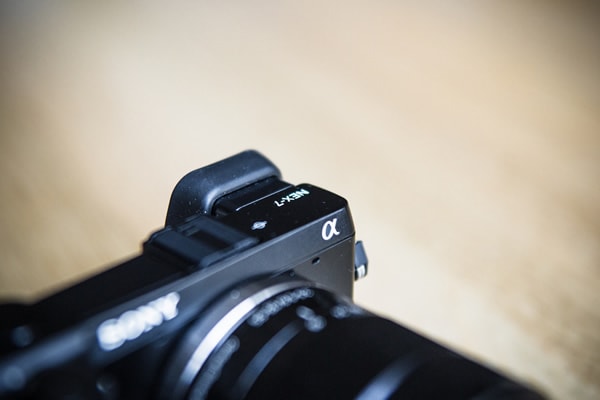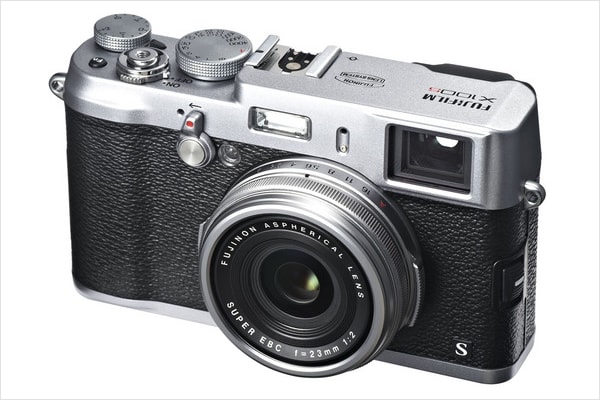The Future Is Mirrorless?
You may not have noticed, but an I, Robot-style army of artificially intelligent photographic equipment is on the march – and it wants to take over. It may already be too late to stop them, but at least I can warn you. I am, of course, talking about mirrorless cameras.
What’s so bad about a clever camera that has been designed without the need for an archaic trap-door mechanism, I hear you ask? Well, in theory, nothing. In practice, the answer is somewhat different.

photo by Bruno De Regge
When you line up to take a picture, what do you do? Yes, you check exposure and the like, but I’m thinking of something more fundamental than that. I’m talking about framing the shot. This has always been achieved by looking through or into a viewfinder – until now, that is. The compact camera and its apparent successor, the mobile phone, have trained the modern photographer to take photos in a zombie-like, arms outstretched posture, with their picture-taking apparatus waving about in mid-air. Image stabilization technology is improving all the time, so even the wobbliest of arms can produce holiday snaps sharp enough to make a decent guess of which one your mother is. If you’re serious about image quality, though, the ability to tuck in your arms and clamp the viewfinder’s eyepiece to your face steadies things significantly.
And this is where things fall apart for the current crop of mirrorless cameras. A quick survey of Amazon finds that only a few of the top ten best-selling models under $1000 has a viewfinder. All I can say is that, if we, the photographers, allow camera manufacturers to continue on this dumbed-down consumer-focused course, we won’t be in a position to complain when our future wedding pictures look like they’ve been taken by a Harlem Shaker.
For the sake of fairness, I should mention that I don’t use the viewfinder on my DSLR very much when I’m shooting landscapes, during which time my camera is also on my tripod. The thought of shooting anything handheld using just the screen, however, fills me with dread.
It’s also worth pointing out that a number of mirrorless cameras do have viewfinders, particularly at the more expensive end of the spectrum. Unfortunately, they are all “electronic viewfinders” – which, incidentally, happens to be a colloquial expression meaning “eye-strain” (…yeah, okay, I made that up). Clearly, some folks don’t mind glueing their eyeball to a tiny TV screen, but I personally find EVFs to be laggy and impossible to use for manual focusing.
Of course, there are quite a few reasons to like mirrorless cameras. A quick look at some specifications confirms that a lack of mirror allows for incredible burst mode speeds, and because the sensors in these cameras are designed to be “always on,” the video quality among mirrorless models is generally pretty high. Additionally, the lack of reflex (mirror/shutter) mechanism also allows manufacturers to make mirrorless cameras in very compact sizes.
Why, then, do so few professionals go for the mirrorless option?
Quite apart from the viewfinder issue, and the lack of lens options with some mirrorless systems, I would suggest that the poor autofocus, by which many mirrorless cameras are blighted, is the most major cause for concern. Some manufacturers have recently found a way to use phase detection (the autofocus system used in DSLRs) in their mirrorless models, making the autofocus very fast. Sadly, this technology is far from being ubiquitous in the mirrorless world, and most cameras in this genre still rely on dead-slow, contrast autofocus.
It’s also very obviously the case that most mirrorless cameras are not set up for serious photography. And I don’t mean that as an insult to the thousands of mirrorless-owning photographers out there, because I know that you folks take great pictures. Let me explain.
Take the Nikon 1 V2 as an example. If I were looking to use this camera in a professional capacity, or merely as a dedicated enthusiast, I would immediately run into problems. First, I would have a choice of only eight lenses (at the time of writing) that natively fit my camera, and none of those lenses offers manual focusing, other than via a process which includes convoluted menus and a lot of button pressing. I would also be completely stranded in poor light, because the only flashgun that it will take is the Nikon SB-N7, which is about as useful as my keyring torch. You can forget wireless triggers as well, because the V2 doesn’t have a proper hotshoe.
And you expect me to pay nearly $800/£700 for all of this pleasure?
I know that this article will have mortally offended the more committed members of the mirrorless fan club. But wait. In spite of all the issues I have mentioned above…I actually seriously love a mirrorless camera. It goes by the name of Fujifilm X100S.

Fuji X100s on Amazon
No, the X100S doesn’t have a stunning autofocus, but in all other respects, it is the antithesis of everything that is bad about the majority of mirrorless cameras. It has an optical (if offset) viewfinder, a manual focus ring on its prime lens, a proper hotshoe, and it is entirely controllable with physical buttons instead of ghastly menus. Not forgetting that it comes equipped with a moiré-busting, sharp-as-broken-glass X-Trans sensor.
These features are not just specifications – they are odes to photography and photographers. They tell me that Fuji understands the needs of the dedicated snapper, and isn’t just putting big numbers on the spec sheet for a profit. It shows that Fuji knows I’m not going to be impressed by a gazillion-frames-per-second burst speed, an 85 mega-pixel sensor or a 10-1200mm zoom. And it also shows that Fuji knows that what I’m really impressed by, is simplicity of use and great image quality.
That may have sounded like the soppiest sales patter ever, but I think you can see my point. If, as seems likely, the future world of cameras is going to be dominated by mirrorless technology, then I sincerely hope that manufacturers will offer models that don’t completely bypass the photographer during the picture-taking process.
Because, quite frankly, if the future of photography looks more like the X100S, then, as far as I’m concerned, the march of the mirrorless revolution might not be such a bad thing after all.
What do you think about mirrorless cameras? Would you defend your G3 or NEX to the last? Or would you rather have a nostalgic “clack” with every shot?
Whatever your viewpoint, we’d love to hear! Get in touch with me or Contrastly on Twitter.
